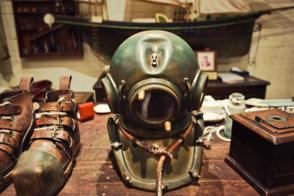When you set off on luxury Kimberley cruises, it’s not just the incredible landscape and breathtaking scenery that you’ll be experiencing – you’ll also learn about the rich and fascinating history of the region. There’s always something new to learn about the Kimberley and today we’ll be looking at the history of pearling in the area and how the practice continues today.
Early Aboriginal pearling
Before Australia had even been discovered by Europeans, the Aboriginal inhabitants of the Kimberley were engaged in the trade of pearls. However, it wasn’t the pearls themselves they were interested in – instead, it was the large shells which were traded across Australia and the shells were sought after for cultural celebrations and rituals.
Eventually, the pearls in the Kimberley attracted European pearlers and this unfortunately led the exploitation of many Aboriginal people who were used for labour.
Early European pearling
Once Europeans arrived in the Kimberley area, they quickly became aware of the presence of pearl shells and in the 1860’s people would simply wade into shallow water to collect the shells. As time went on, diving practices began to evolve and diving apparatuses were developed. However, it was still common practice to use ‘naked diving’ where divers, who were generally Aboriginal, would dive unassisted to collect pearls.
By the 1870’s, the first pearling port had opened in Cossack and there were over 80 pearling boats operating with divers arriving from Japan, Malaysia and China. By the 1900s, the pearling operation had largely moved to Broome thanks to the rich supply of pearls and during that period there were over 300 pearl luggers in the area. During this time, it was the shell that was being harvested for items such as buttons and cutlery due to natural pearls being a rare occurrence.
Decline and resurgence
The industry began to slow down by World War I and had all but stopped by World War II. In fact, during this period the pearl luggers were purposely torched to prevent them falling into the hand of the Japanese. By the 1950s, plastic buttons were developed which led to a further decline in the pearling industry in Broome. However, the Japanese soon shared introduced cultured pearling techniques and the first pearl farm was set up in 1956. Since that time, the Kimberley pearl industry has gone from strength to strength.
For your next Kimberley tour, choose luxury and experience with Ocean Dream Charters. Our 80-foot twin hull catamaran means we can show you around the Kimberley in style. We provide the equipment for all of our excursions, along with fishing gear so you can try you luck with a line! Get ready for the experience of a lifestyle with one of our scheduled cruises or private charters.
If you’re ready to find out more about Kimberley adventure cruises, contact Ocean Dream Charters today on 1300 944 727.